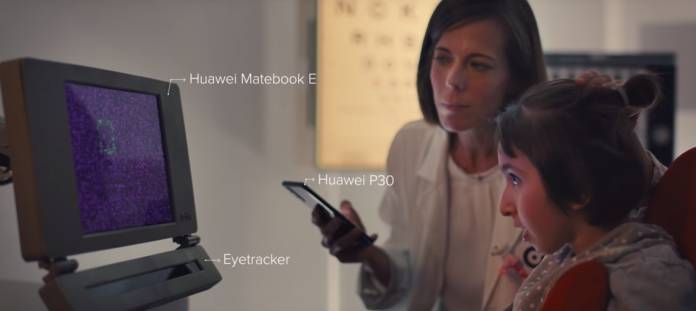
The World Health Organization says that around 70-80% of the cases of children with visual impairment globally could have been preventable and curable, if only they were detected early on. Huawei is now using its Artificial Intelligence prowess to be able to help detect cases like this early on using a tool called Track AI that will use a software called DIVE (Devices for an Integral Visual Examination on the Huawei Matebook E and then processed on their newly launched Huawei P30 smartphone.
Once Track AI is already up and running, health workers around the world will be able to have a portable and relatively affordable device to test young children that they suspect may be in the early stages of visual impairment. These children have a different gaze pattern as compared to those who do not have it and so detecting and gathering data using AI will be useful for those dealing with these cases.
How it works sounds pretty simple on paper. The DIVE software is installed in the Matebook E monitors and a patient observes different stimuli that are meant to test visual function. The monitors track the eye movement of the patient and then the data collected here is processed in the Huawei P30 which has a Kirin 980 chip which is capable of processing AI data using two dedicated Neural Processing Units. Track AI doesn’t require WiFi to work and receives real-time data.
The phone will use HiAI algorithm and also build on Google’s TensorFlow (an open-source) platform to determine if there are potential visual impairment indicators in the child. They are currently testing it out in early trials in five countries, China, Mexico, UAE, Spain, and the UK. Once they are able to gather enough data, they will start training neural networks and then create a prototype device later this year. They plan to roll out the final device by 2020.
SOURCE: Huawei









